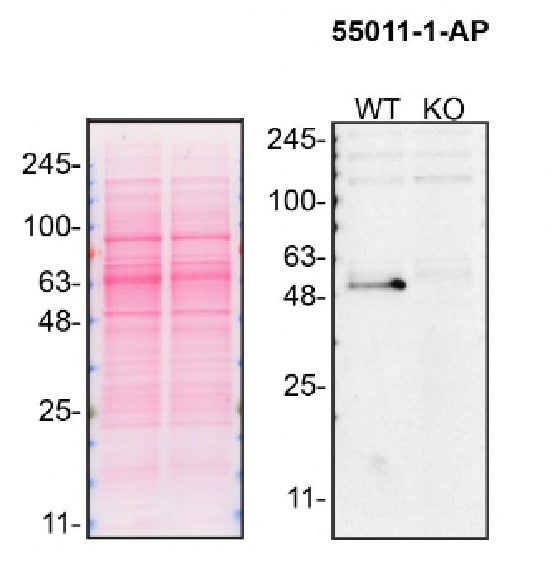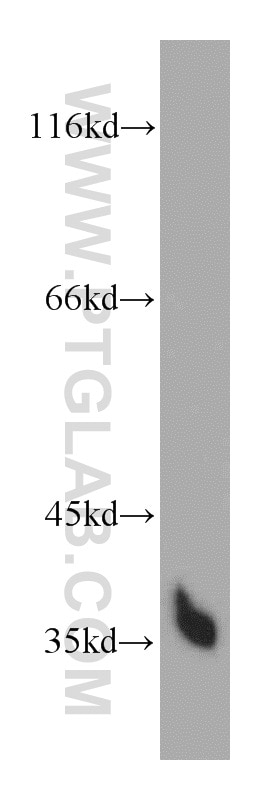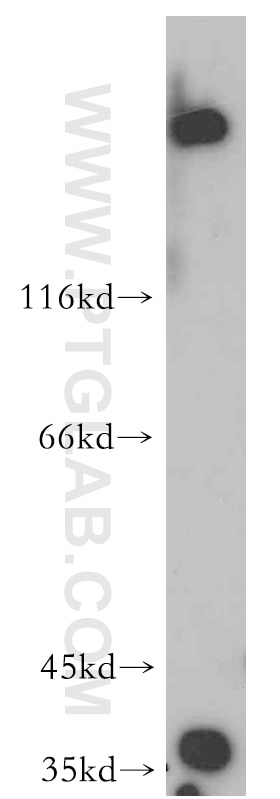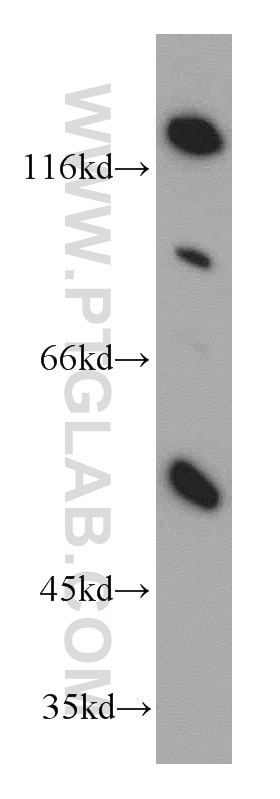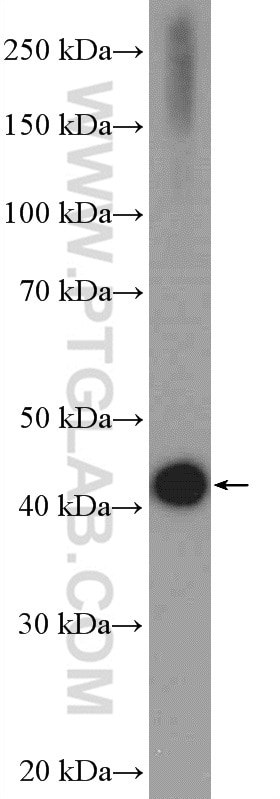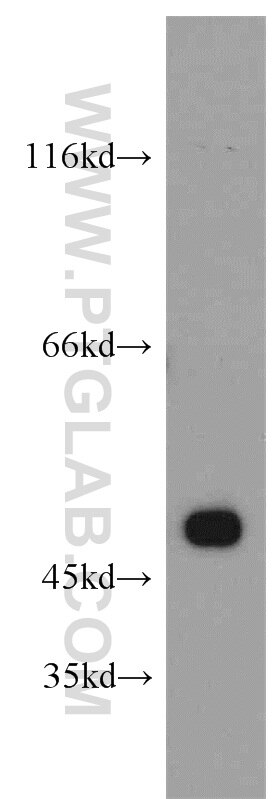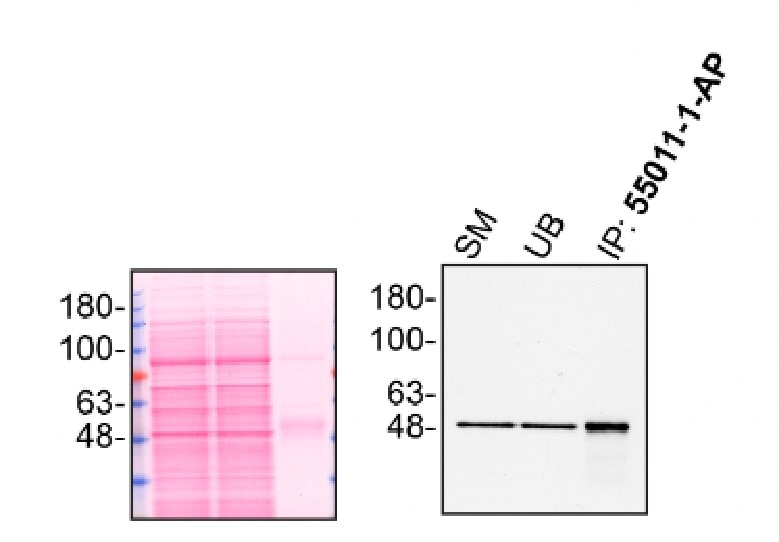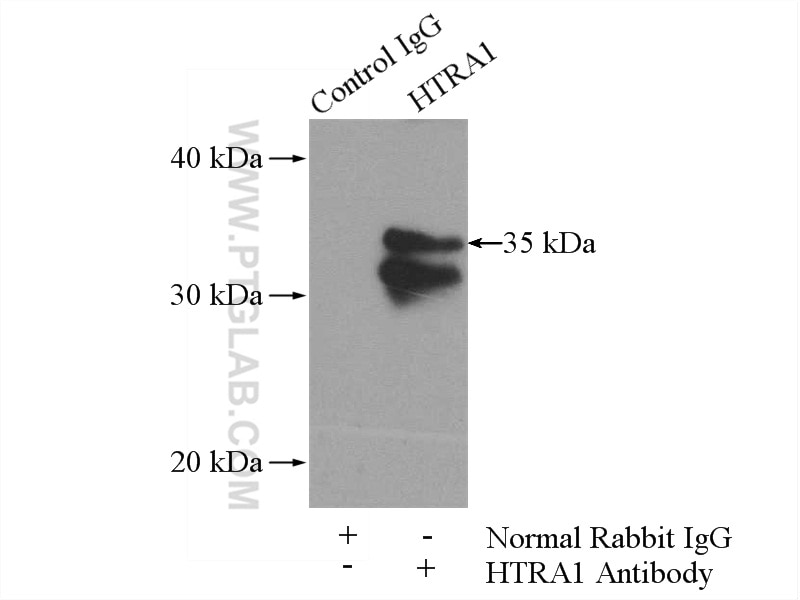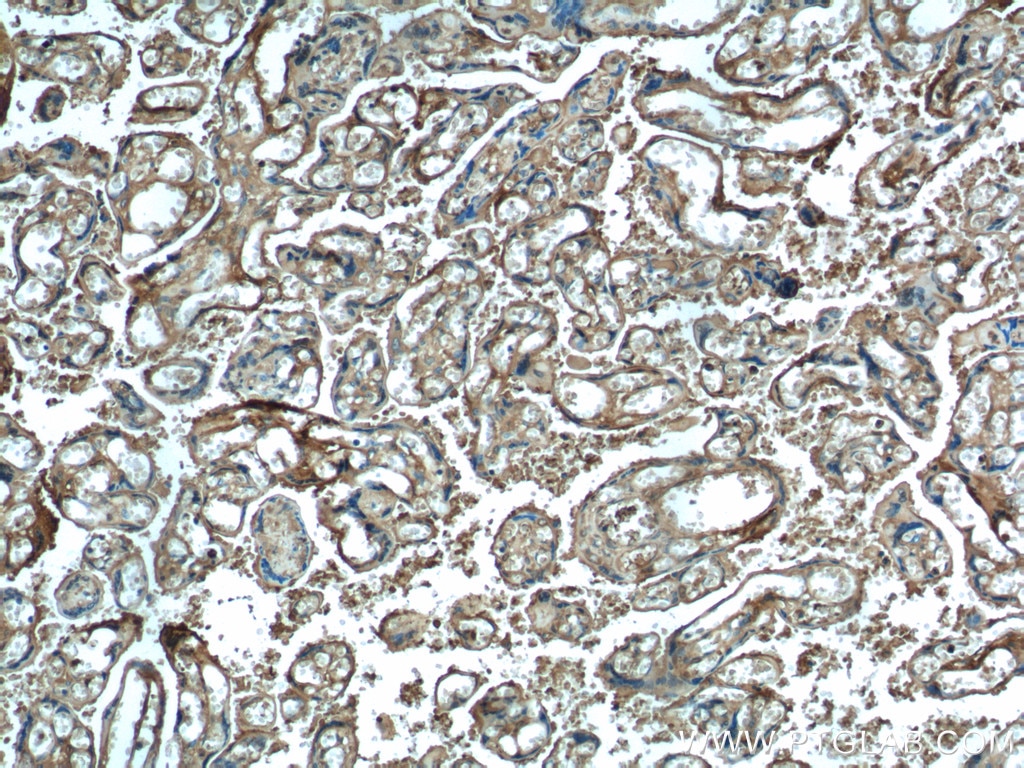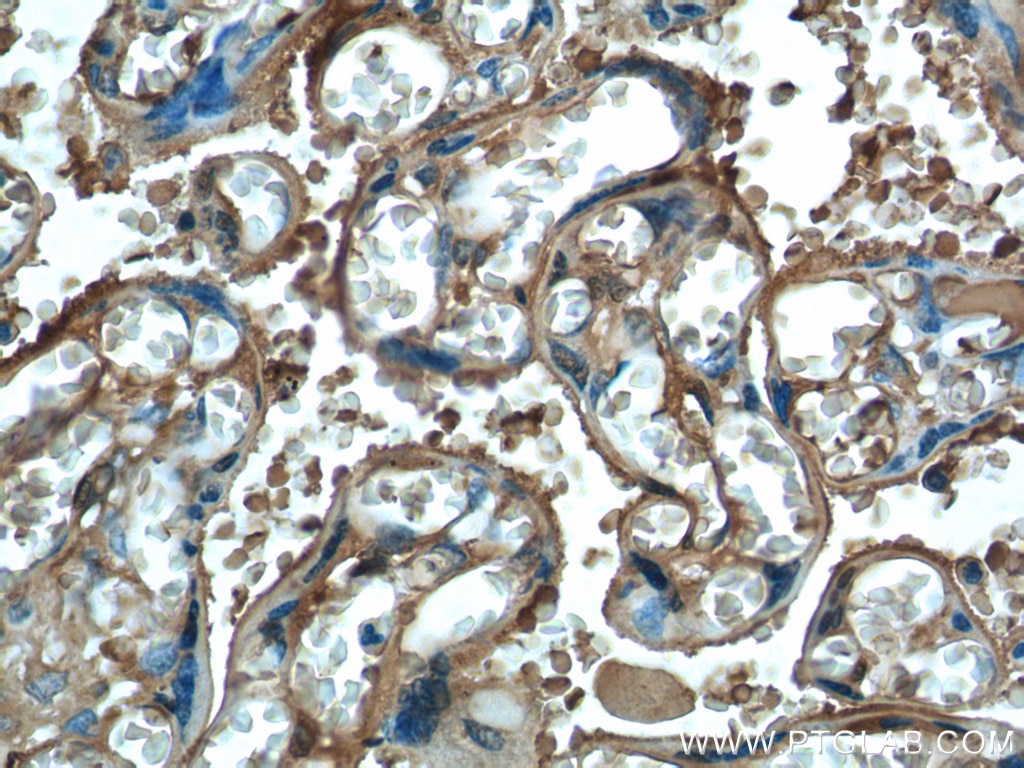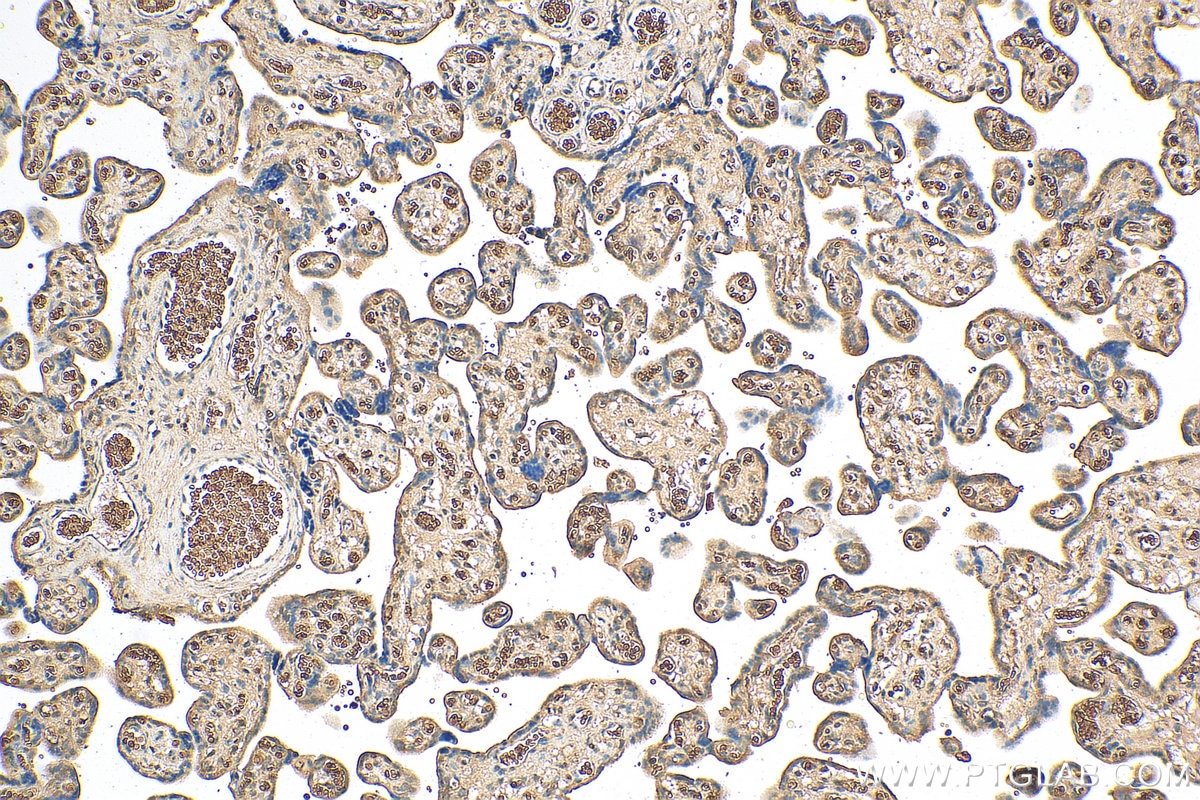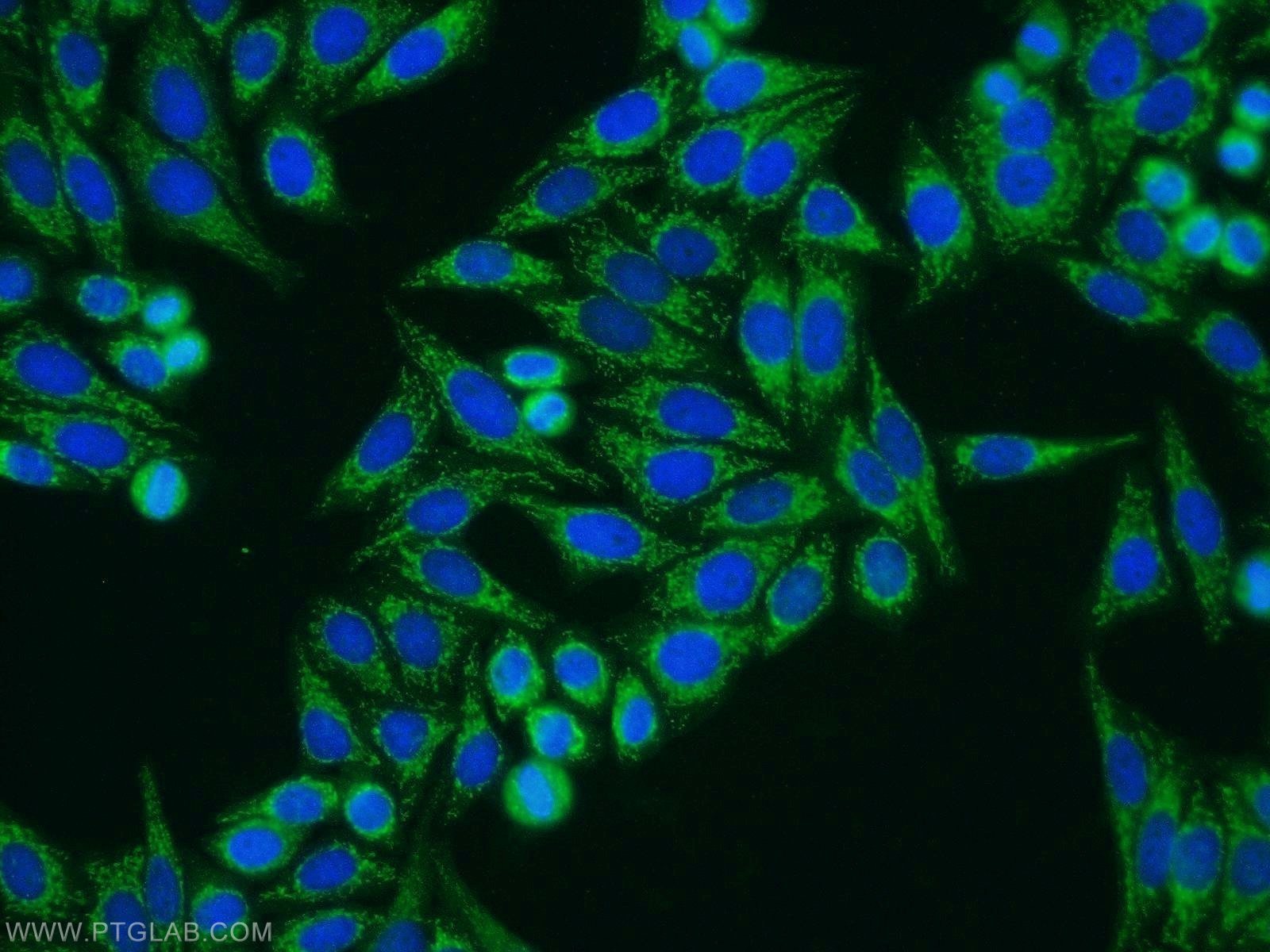- Featured Product
- KD/KO Validated
HTRA1 Polyklonaler Antikörper
HTRA1 Polyklonal Antikörper für IF, IHC, IP, WB, ELISA
Wirt / Isotyp
Kaninchen / IgG
Getestete Reaktivität
human, Maus, Ratte und mehr (1)
Anwendung
WB, IP, IHC, IF, ELISA
Konjugation
Unkonjugiert
Kat-Nr. : 55011-1-AP
Synonyme
Galerie der Validierungsdaten
Geprüfte Anwendungen
| Erfolgreiche Detektion in WB | L02-Zellen, HepG2-Zellen, Maushirngewebe |
| Erfolgreiche IP | L02-Zellen, HAP1 cells |
| Erfolgreiche Detektion in IHC | humanes Plazenta-Gewebe Hinweis: Antigendemaskierung mit TE-Puffer pH 9,0 empfohlen. (*) Wahlweise kann die Antigendemaskierung auch mit Citratpuffer pH 6,0 erfolgen. |
| Erfolgreiche Detektion in IF | HepG2-Zellen |
Empfohlene Verdünnung
| Anwendung | Verdünnung |
|---|---|
| Western Blot (WB) | WB : 1:500-1:2000 |
| Immunpräzipitation (IP) | IP : 0.5-4.0 ug for 1.0-3.0 mg of total protein lysate |
| Immunhistochemie (IHC) | IHC : 1:50-1:500 |
| Immunfluoreszenz (IF) | IF : 1:10-1:100 |
| It is recommended that this reagent should be titrated in each testing system to obtain optimal results. | |
| Sample-dependent, check data in validation data gallery | |
Veröffentlichte Anwendungen
| WB | See 8 publications below |
| IHC | See 4 publications below |
| IF | See 3 publications below |
Produktinformation
55011-1-AP bindet in WB, IP, IHC, IF, ELISA HTRA1 und zeigt Reaktivität mit human, Maus, Ratten
| Getestete Reaktivität | human, Maus, Ratte |
| In Publikationen genannte Reaktivität | human, Maus, Ratte, Zebrafisch |
| Wirt / Isotyp | Kaninchen / IgG |
| Klonalität | Polyklonal |
| Typ | Antikörper |
| Immunogen | Peptid |
| Vollständiger Name | HtrA serine peptidase 1 |
| Berechnetes Molekulargewicht | 51 kDa |
| Beobachtetes Molekulargewicht | 35 kDa, 50 kDa, 42 kDa |
| GenBank-Zugangsnummer | NM_002775 |
| Gene symbol | HTRA1 |
| Gene ID (NCBI) | 5654 |
| Konjugation | Unkonjugiert |
| Form | Liquid |
| Reinigungsmethode | Antigen-Affinitätsreinigung |
| Lagerungspuffer | PBS mit 0.02% Natriumazid und 50% Glycerin pH 7.3. |
| Lagerungsbedingungen | Bei -20°C lagern. Nach dem Versand ein Jahr lang stabil Aliquotieren ist bei -20oC Lagerung nicht notwendig. 20ul Größen enthalten 0,1% BSA. |
Hintergrundinformationen
HTRA1, also named as HTRA, PRSS11 and L56, belongs to the peptidase S1B family. It is a protease that regulates the availability of nsulin-like growth factors (IGFs) by cleaving IGF-binding proteins. HTRA1 represses signaling by TGF-beta family members. Variations in the promoter region of HTRA1 are the cause of susceptibility to age-related macular degeneration type 7 (ARMD7). Defects in HTRA1 are the cause of cerebral autosomal recessive arteriopathy with subcortical infarcts and leukoencephalopathy (CARASIL). The 50 kDa HTRA1 was found at varying levels in the majority samples tested, whereas the 42 kDa form of HTRA1 was identified in degenerated intervertebral disc protein samples(PMID:22556410). The short truncated monomer 37 kDa and dimer 74 kDa are proved (PMID:25329061). The antibody is specific to HTRA1.
Protokolle
| Produktspezifische Protokolle | |
|---|---|
| WB protocol for HTRA1 antibody 55011-1-AP | Protokoll herunterladen |
| IHC protocol for HTRA1 antibody 55011-1-AP | Protokoll herunterladen |
| IF protocol for HTRA1 antibody 55011-1-AP | Protokoll herunterladen |
| IP protocol for HTRA1 antibody 55011-1-AP | Protokoll herunterladen |
| Standard-Protokolle | |
|---|---|
| Klicken Sie hier, um unsere Standardprotokolle anzuzeigen |
Publikationen
| Species | Application | Title |
|---|---|---|
Biomaterials Brief exposure to directionally-specific pulsed electromagnetic fields stimulates extracellular vesicle release and is antagonized by streptomycin: A potential regenerative medicine and food industry paradigm | ||
Front Immunol Emodin Alleviates Sodium Taurocholate-Induced Pancreatic Acinar Cell Injury via MicroRNA-30a-5p-Mediated Inhibition of High-Temperature Requirement A/Transforming Growth Factor Beta 1 Inflammatory Signaling. | ||
Am J Pathol High Temperature Requirement A 1 (HTRA1) Causes Photoreceptor Cell Death in Zebrafish Disease Models. | ||
Am J Pathol Proteolytic Degradation and Inflammation Play Critical Roles in Polypoidal Choroidal Vasculopathy. | ||
Bioengineered Long non-coding RNA lincRNA-erythroid prosurvival (EPS) alleviates cerebral ischemia/reperfusion injury by maintaining high-temperature requirement protein A1 (Htra1) stability through recruiting heterogeneous nuclear ribonucleoprotein L (HNRNPL). |
